The Iris Nebula is a bright, large reflection nebula located approximately 1,300 light-years away in the constellation Cepheus. With an apparent magnitude of 6.8, the nebula is visible in backyard telescopes. It is one of the most popular astrophotography targets in the northern sky.
The nebula has the designation NGC 7023 in the New General Catalogue and Caldwell 4 in the Caldwell catalogue of deep sky objects visible to amateur astronomers. The New General Catalogue designation refers to the open star cluster NGC 7023, which is associated with the nebula, while the nebula itself is designated LBN 487 or VdB 139. The star cluster is visible as the “top hat” above the center of the nebula.
Named for its resemblance to the iris flower, the Iris Nebula has a diameter of 6 light-years and occupies an area of 18 by 18 arcminutes of the apparent sky. It appears near Alfirk (Beta Cephei), one of the bright stars that outline the constellation figure of Cepheus. The fainter variable red giant T Cephei also appears near the nebula.
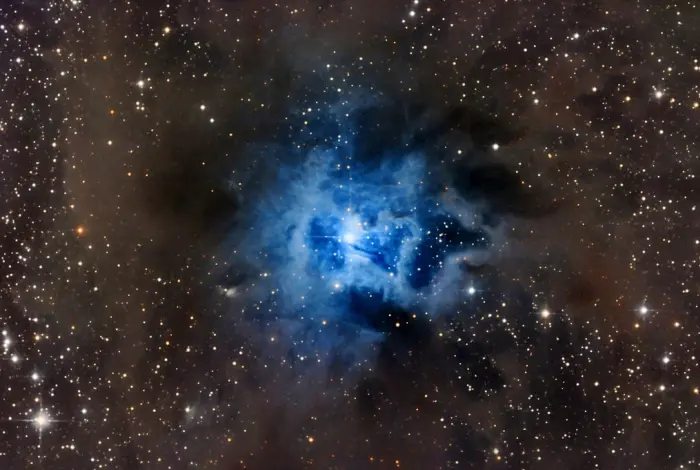
Iris Nebula (Caldwell 4), image: Wikimedia Commons/Bill.Tins (CC BY-SA 4.0)
The Iris Nebula is illuminated by the hot, blue, massive star SAO 19158 (HD 200775). The star lights up the surrounding particles of dust that are 10 to 100 times smaller than dust particles on Earth. These particles diffuse the star’s glare, producing the image of a nebula that glows in bluish light. The central region of the nebula was imaged by NASA’s Hubble Space Telescope in December 2009.
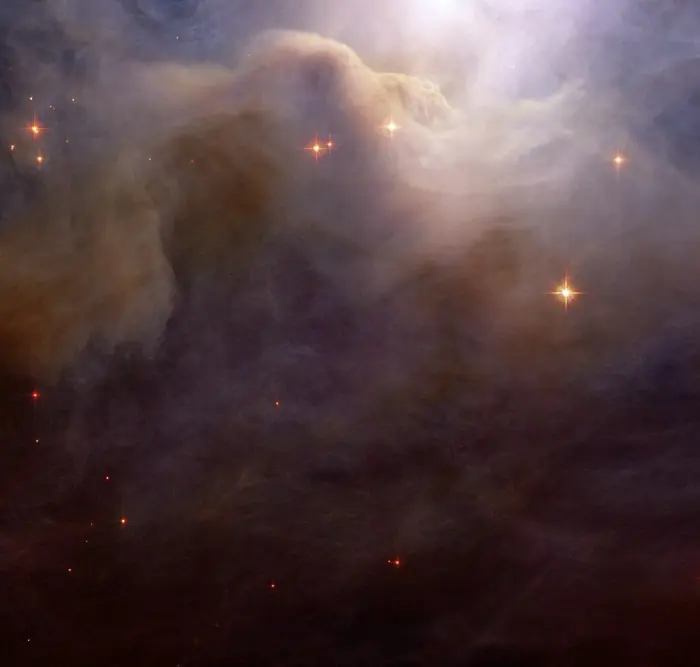
his beautiful, blushing nebula is unique amongst its counterparts. While many of the nebulas visible in the night sky are emission nebulas — clouds of dust and gas that are hot enough to emit their own radiation and light — Caldwell 4, otherwise known as the Iris Nebula or NGC 7023, is a reflection nebula. This means that its color comes from the scattered light of its central star, which lies nestled in the abundant star fields of the constellation Cepheus. Located some 1,400 light-years away from Earth, the Iris Nebula’s glowing gaseous petals stretch roughly 6 light-years across. This close-up image, showing one rosy-colored region within Caldwell 4, is a composite of four exposures captured by Hubble’s Advanced Camera for Surveys in visible and near-infrared filters. Astronomers also studied the nebula with Hubble’s Near Infrared Camera and Multi-Object Spectrometer (NICMOS) to try to determine which chemical elements are present in Caldwell 4. Image credit: NASA & ESA
The nebula’s central star has the stellar classification B2Ve and a surface temperature of about 17,000 K. It has a mass 10 times that of the Sun and a radius about 8 times solar.
HD 200775 is a Herbig Ae/Be star, a young pre-main-sequence star that is still shrouded in an envelope of dust and gas and still in the process of contracting. Herbig Ae/Be stars are physically associated with the reflection nebulae that they illuminate because these nebulae are part of their parent star-forming regions. HD 200775 is one of the brightest stars of this type discovered to date.
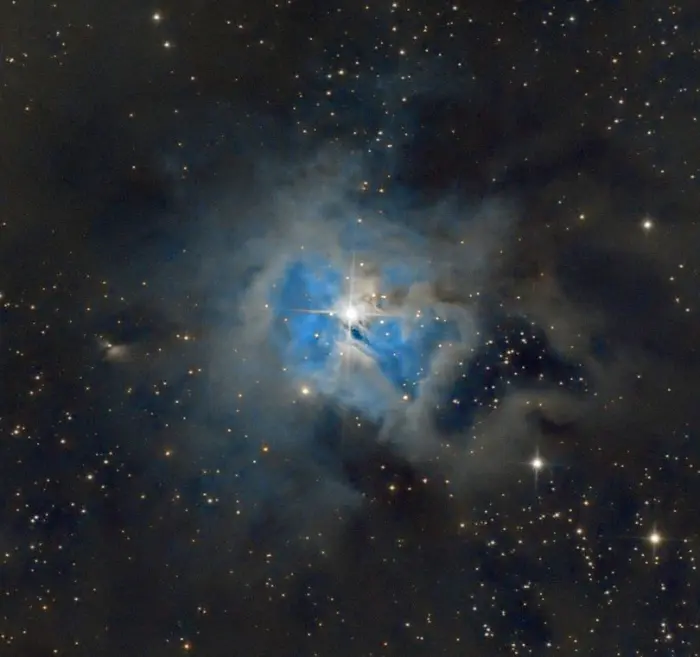
Iris nebula, image credit: Aurélien Lepanot (CC BY-SA 4.0)
HD 200775 has the variable star designation V380 Cephei. It shines at magnitude 7.4, below unaided eye visibility, and is part of a close binary system with an orbital period of 3.68 years. The companion is believed to be a pre-main-sequence star with 3.5 times the mass of our Sun. The binary star system lies at the centre of a small star cluster consisting of similar pre-main-sequence stars.
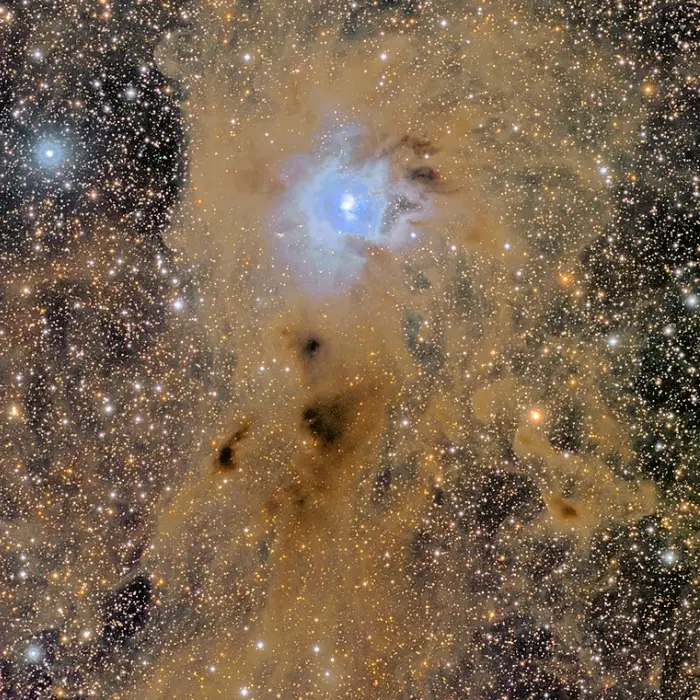
The Iris Nebula (NGC 7023), image: Paolo Demaria, Giuseppe Donatiello, Rolando Ligustri, Tim Stone – Joint Images Team (CC0 1.0)
The nebula’s hourglass shape is the result of interactions of HD 200775 with the surrounding dust cloud. Observations in radio wavelengths have revealed that the central star lies in a bilobed cavity stretching across an area 5 by 2.5 light-years in size. The walls of the cavity correspond to the border of the nebula as it appears in optical wavelengths. The cavity was likely formed by the young star when it was at an earlier stage of forming.
The blue light of the star is reflected by the surrounding dust. The red regions near the centre consist of filaments of dust that emit broadband red light. The extended red emission (ERE) regions are a result of a type of phospholuminescence in which particles of dust are flooded by high-energy ultraviolet radiation from the central star and emit red light.
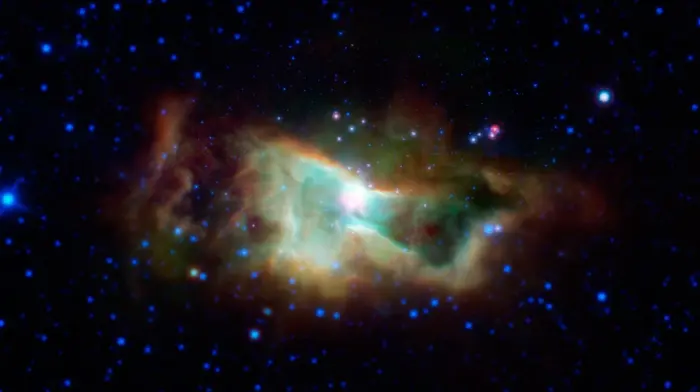
This cloud of glowing gas is the Iris nebula, as seen in infrared light by NASA’s Spitzer Space Telescope. The main cluster of stars within the nebula is called NGC 7023. It lies 1,300 light-years away in the Cepheus constellation. Image: NASA/JPL-Caltech
The Iris Nebula contains an unusually high amount of polycyclic aromatic hydrocarbons (PAHs), complex molecules that occur naturally in coal, gasoline and oil and can also result from burning wood, gas, or food. PAHs were discovered during near-infrared observations of the nebula’s red regions. Astronomers found that when PAHs were hit by UV radiation from SAO 19158, they evolved into more complex molecules. They believe that the growth of these molecules may produce the same organic ingredients that led to the emergence of life on Earth.
The Iris Nebula was discovered by the German-born British astronomer William Herschel on October 18, 1794. It is part of the larger Cepheus Flare molecular cloud, a vast star-forming region that also includes the nearby Ghost Nebula (Sh2-136). NGC 7023 lies at the northern end of the cloud. Cepheus Flare stretches across an area almost the size of seven full Moons.
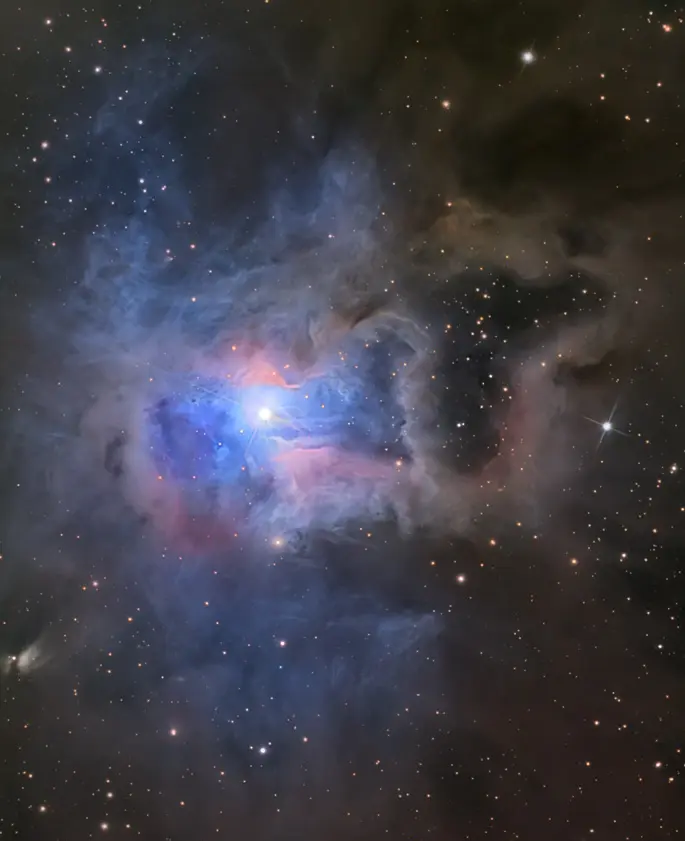
Iris Nebula (NGC 7023), image: Adam Block/Mount Lemmon SkyCenter/University of Arizona (CC BY-SA 3.0 US)
Location
The Iris Nebula is relatively easy to find because it appears next to the constellation figure of Cepheus, which resembles a stick house. The house pattern appears just above the W of Cassiopeia. Cepheus is not particularly bright, but it can be found using the bright stars of Cassiopeia’s W. A line extended from Schedar through Caph, Cassiopeia’s brightest stars, leads to Alderamin, the brightest star in Cepheus.
Alderamin forms the base of the house asterism with the fainter Zeta Cephei. The nebula lies 6 degrees northwest of the star, near the imaginary line connecting Alfirk and Alderamin and roughly halfway between Polaris in Ursa Minor and Deneb in Cygnus. It can be found by extending a line from Errai through Alfirk. The fainter Ghost Nebula appears closer to the line connecting Alfirk and Errai.
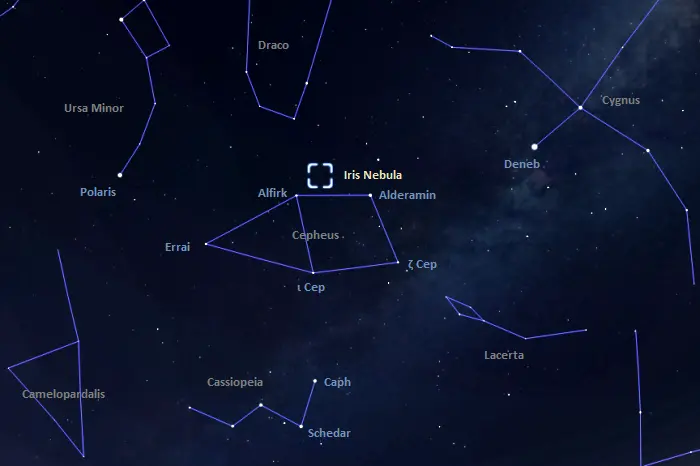
The location of the Iris Nebula, image: Stellarium
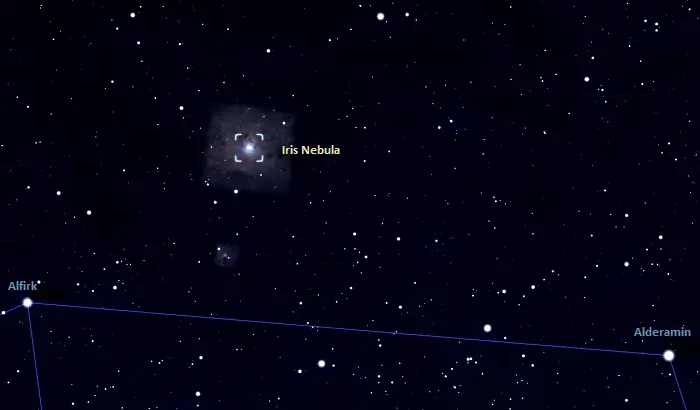
The Iris Nebula (C4) and the Ghost Nebula (Sh2-136), image: Stellarium
The Iris Nebula is a difficult target for small telescopes. It may be spotted in 4-inch refractors but is best observed in 10-inch and larger telescopes. The details of the nebula can be observed under good conditions but are best captured in long-exposure photographs.
For observers in the northern hemisphere, Cepheus is visible throughout the year. The best time of the year to observe the Iris Nebula is during the month of November, when Cepheus is high above the horizon in the evening sky. The entire constellation is visible from locations north of the latitude 10° S. Due to its proximity to the north celestial pole, Cepheus is always found within the same circle of the sky, near Polaris.
The Iris Nebula can be observed from locations north of the latitude 21° S, but it never rises high above the horizon for observers near the equator. For those living north of the latitude 22°, the nebula never falls below the horizon and is visible year-round.
Iris Nebula – NGC 7023
| Constellation | Cepheus |
| Right ascension | 21h 01m 35.60s |
| Declination | +68° 10′ 10.0″ |
| Distance | 1,300 light-years |
| Apparent magnitude | 6.8 |
| Apparent size | 18’ x 18’ |
| Radius | 3 light-years |
| Names and designations | Iris Nebula, NGC 7023, Caldwell 4, LBN 487, Cr 429, GN 21.01.0 |